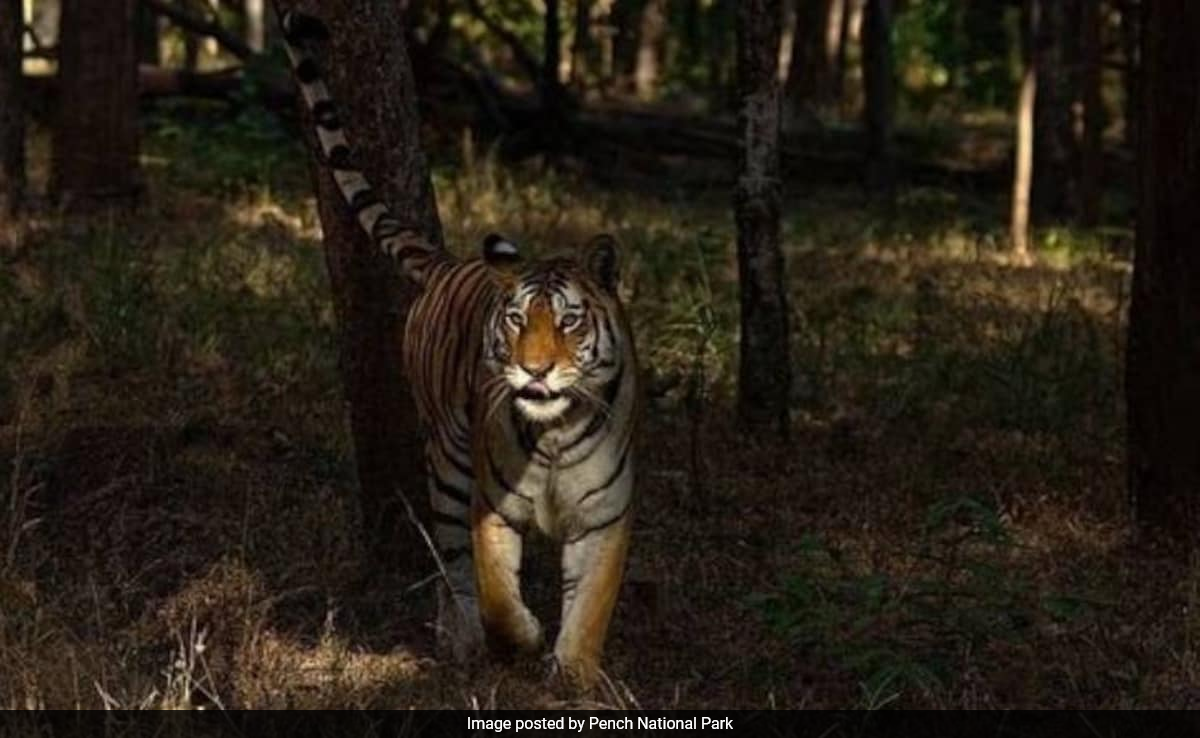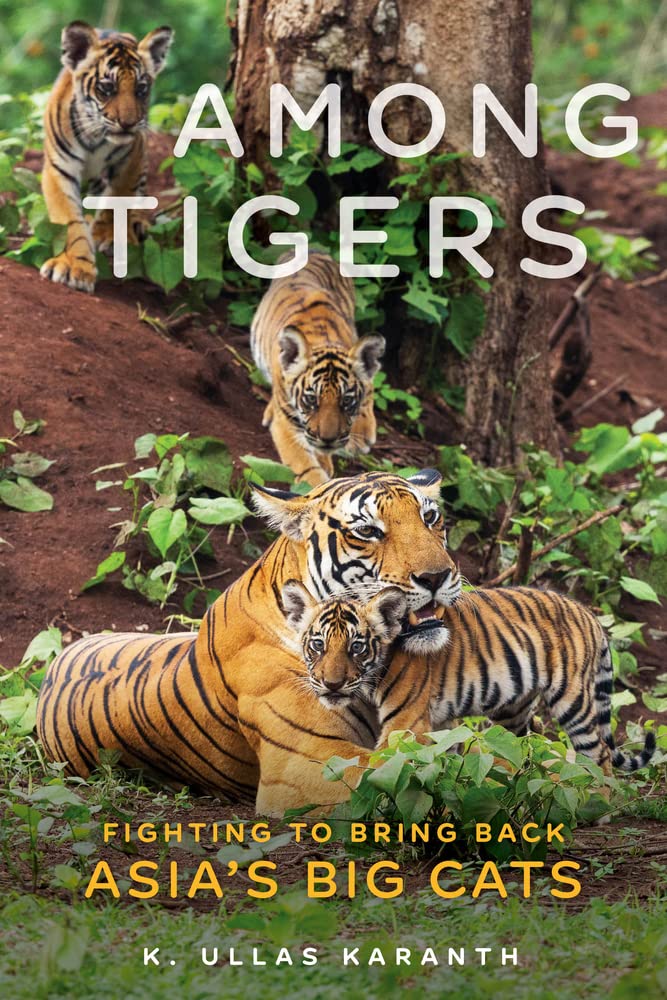
A recent decision by the Supreme Court to ban safaris in the core area of India's largest Corbett tiger reserve has brought the spotlight on dangers to wildlife, and more importantly, on increasing human-animal conflict. It is in this context that seasoned conservator K. Ullas Karanth's brilliant book, Among Tigers: Fighting to Bring Back Asia's Big Cats, assumes relevance.
Karanth has been at the forefront of India's tiger conservation process for over five decades. Stuart L. Pimm, President of Saving Nature, has called Karanth's book, published in the US by the Chicago Press Review, a tale of high adventure. “He (Karanth) brings science to tiger conservation, confronts the managers and politicians alike, and never forgets the needs of the local people who must live with tigers,” wrote Pimm while praising the book.

Celebrated American historian and author of several award-winning documentaries and 19 books, including Tiger Wallahs: Saving the Greatest of the Great Cats, has called Karanth's work exemplary, describing him one of India's most effective conservationists.
Growing Worries In Corbett Reserve
Tiger-human conflict and subsequent attacks by the wild cats have raised alarm in Corbett Reserve; there have also been some attacks and deaths in Bandhavgarh. Karanth repeatedly emphasises in his book that he has no patience for urban, idealistic tiger enthusiasts or for overfunded, underperforming organisations located far from the ground reality. Drawing from decades of experience, his conservation strategies are firmly rooted in the practical challenges faced on the ground.
While Karanth has worked extensively with wild cats across India, particularly in South and West India, this discussion will focus on India's largest tiger habitat, the Corbett Reserve, which regularly makes headlines. It is one of the 13 protected areas under the World Wide Fund For Nature's Terai Arc Landscape programme. The reserve spans 1,288.31 sq km, comprising a core zone of 822 sq km and a buffer area of 466.31 sq km. According to the latest tiger census report, there are 260 wild cats within the Corbett Reserve and 229 outside in Kumaon.
Karanth worked tirelessly to save the wild cats, unlike the British and Indian kings who routinely hunted and killed tigers, often after the distressed animal was cornered by hunters with the help of villagers.
Really Understanding A Wild Cat
The book details how Karanth fell in love with the wild cats. He writes of his intense, deep study of the tigers: “Raising three to four cubs to independence is an exhausting mission that wears down the tigress. After she has raised three or four litters - about ten to fifteen cubs - during a territorial tenure of right to ten years, the tigress fades away. A younger, more vigorous tigress will fight for her territory, and the story repeats itself. Territorial females are the cornerstones of the tiger society. Central to my study was observing their behaviours, recording movements, activities, and use of space.”
Karanth explains why studying the behaviour of wild cats is of paramount importance for conservation efforts. The question remains: is this study effectively happening in India? A recent deadly tiger attack on a woman in Chukam village near Corbett Reserve serves as a stark example. This incident, the third such attack in India's largest reserve, has sparked alarm. The woman had ventured into the forest for morning ablutions around 6:00 a.m. The tiger had ventured close to the village, having killed a cow the previous night before attacking the woman in the morning. Subsequently, the tiger dragged the body deep into the forests.
Karanth raises crucial points, emphasising the significance of understanding tiger movements and urging people to avoid areas frequented by wild cats.
Rapidly Diminishing Habitat
With an estimated 150-plus hotels and resorts surrounding Corbett, the habitat of the wild cats is rapidly diminishing. Karanth stresses in his book that it is imperative for the government to formulate a strategy to mitigate human-animal conflict. Villagers must be relocated, or else such attacks will persist. I had the opportunity to converse with Karanth before receiving this costly book. He responded with a detailed email, highlighting his concerns.
“Increased patrolling must be done in the reserve and safari jeeps must have armed guards. India must do some serious ecological audits to understand why human settlements near protected nature reserves must be removed,” he wrote to me.
The book emphasises the importance of tiger conservationists staying attuned to the behavioural patterns of wild cats. They must be adept at interpreting the "jungle drums", relying on natural cues to communicate about tigers or groups of tigers. Failure to do so can lead to trouble, as witnessed near the Dhikala resort, where forest guards were perplexed by a pack of tigers killing two migrant workers in the grasslands.
On The Menace Of Poaching
The book also raises the issue of poaching and ways to handle killers constantly seeking tiger body parts. Karanth has an interesting point of view as to how to handle the menace of poaching. “Even as the global media and the tiger conservationists were worried about the imminent extinction of tigers because of the trade of their body parts, it seemed to me this explanation, as well as remedies they suggested, was far too simplistic. The bigger, overarching challenge was to make more room for wild tigers. Such thriving populations in reserves, producing surpluses, would not be at risk.”
Karanth's book has loads of black and white photographs and the written words seem quite captivating.
I have a point with pricing though. Can the publishers keep it within Rs 500 so that countless Indian libraries and book fairs can display it and have some solid discussions on the big, Indian tigers?
(Shantanu Guha Ray is the Asia Editor of Central News Agency. His book 'The Diamond Trial' came out in 2019)
Disclaimer: These are the personal opinions of the author.
Track Latest News Live on NDTV.com and get news updates from India and around the world


